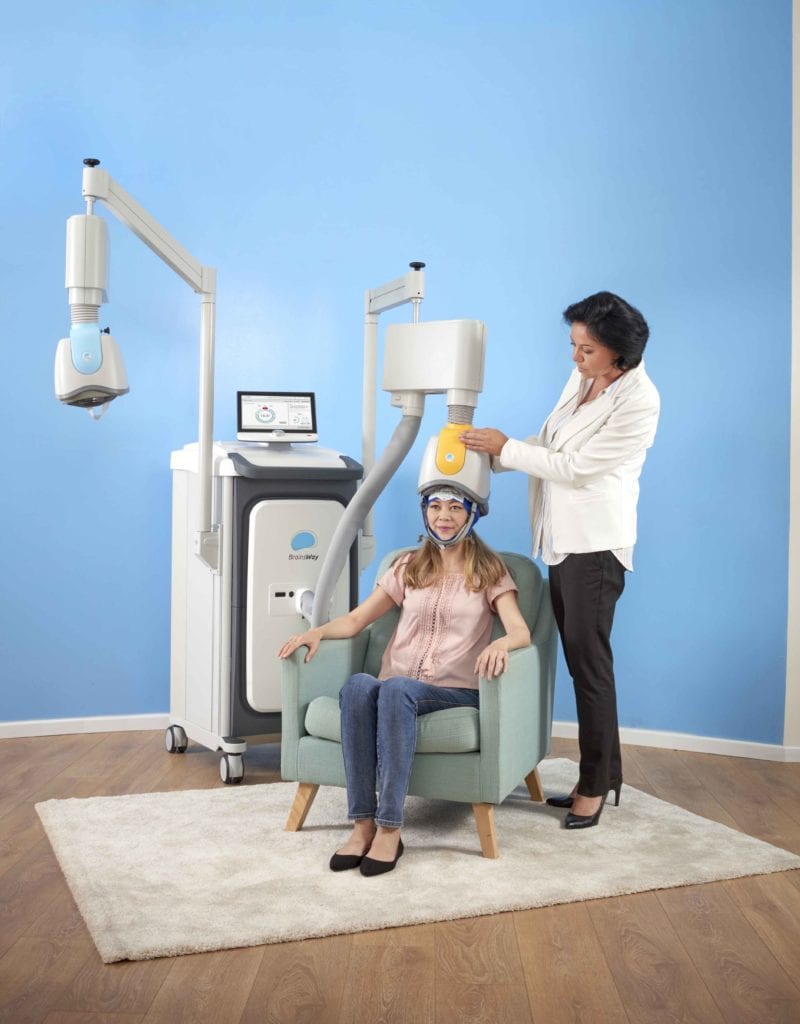Obsessive-compulsive disorder symptoms characterize this mental health condition as an anxiety-inducing illness that significantly impedes an individual’s well-being, by forcing them to focus on and react to adverse thoughts. OCD can be challenging to treat, with more first-generation remedies, with psychotherapy treatments such as exposure and response prevention (ERP) and antidepressant medication, only providing significant relief for a modest subset of patients. One revolutionary treatment for this condition is Deep Transcranial Magnetic Stimulation (Deep TMS™), which has repeatedly been shown to alleviate OCD symptoms. OCD symptoms vary in the level and type of obsessive themes they include, the compulsive behaviors that arise in response to them, the severity to which they burden the individual experiencing them, and their frequency of occurrence. A further layer to this condition is the degree to which the individual battling it is aware they are, in fact, facing a mental health disorder.
Obsessive-compulsive disorder (OCD) is defined by two groups of symptoms: cognitive and behavioral. The condition’s initial symptoms are usually cognitive and involve disruptive thoughts, beliefs, urges or images that are thrust into the individual’s consciousness, causing them a significant amount of distress. OCD usually includes one or more of four major themes:
OCD’s intrusive cognitive symptoms can cause so much stress and frustration that they eventually prompt the individual experiencing them into a series of actions, in an attempt to thwart these unwanted thoughts, and regain a sense of control. Though these OCD-related rituals and actions are intended to garner relief, they quickly begin inducing anxiety of their own: as the person attempts to carry out the compulsive action perfectly, they repeatedly miss the mark, causing them to try again. Any relief from the compulsive action is typically short-lived. Meanwhile, the anxiety they feel continues to assail them, in a self-feeding loop of adverse thoughts, behaviors, and emotions. Trying unsuccessfully to assuage their own symptoms, individuals battling OCD may find their social circles affected, as well as their inner lives. Someone with “just right” thinking, for instance, may have such a hard time feeling laid-back in a setting where it is not socially acceptable for them to rearrange the furniture, they begin avoiding social gatherings at their friends’ houses; another person, plagued by disastrous thoughts, may struggle to leave the house without repeatedly checking that their oven is off, thus repeatedly missing dates with potential romantic partners. Frustrated, exhausted and continually worried, individuals experiencing OCD may eventually develop a sense of determinism, believing that nothing they do can help alleviate their symptoms. It is at this point that OCD-related depression can settle in.

The thoughts and actions that characterize OCD can be equally distressing and confusing, as they can appear to randomly grow out of one’s mind. As such, one of the initial steps of treating OCD within a therapeutic context is trying to make sense of the different symptoms attacking the individual, and see whether they might relate to one another. The relationship between the compulsive actions and distressing thoughts that preceded them can sometimes seem pretty clear: for example, a person whose fear of contamination is followed by a compulsion to wash their hands after each time they touch a doorknob. Other times, the behavior symptoms being experienced may seem unrelated to the obsessive thought patterns that characterize an individual’s OCD. For example, when someone experiencing scary mental images about their partner being injured in a car accident tries to dispel these images by turning the lights in their home on and off in a specific pattern. Though they may seem random, a more in-depth look at an individual’s various OCD symptoms through psychodynamics or cognitive behavioral therapy (CBT) could help uncover hidden themes and shared root causes behind them. In the case of a previous example, where a patient compelled to repeatedly turn the lights on and off to calm the fear of their partner being injured, could over time remember how their mother used to turn the lights off throughout the house at the end of the day, so they began to associate this action with the security they would feel before falling asleep.
Another, somewhat separate aspect of OCD is the level of insight an individual has into their own condition. Someone with a high level of insight, for example, is aware they are facing a mental health illness impeding their quality of life; someone with no insight, however, would not be able to recognize they have a mental health problem that needs to be addressed. The Yale-Brown Obsessive Compulsive Scale (Y-BOCS), one of the most commonly used diagnostic tools to evaluate the existence and severity of an individual’s OCD, addresses this issue of self-awareness by mapping out the wide variety of obsessions and compulsions that individuals can experience, and assessing how much resistance the individual offers against these symptoms.
Leading the way in mental health technology, BrainsWay Deep TMS utilizes magnetic fields to safely regulate the neural activity of brain structures found to be related to OCD symptoms. This cutting edge treatment is the only non-invasive medical device FDA-cleared to treat OCD. The treatment’s efficacy was proven in a 2018 clinical study published in the American Journal of Psychiatry. The study confirmed that Deep TMS is able to offer symptom relief, stating that regulating the neural activity of “the medial prefrontal cortex and anterior cingulate cortex significantly improved OCD symptoms.”